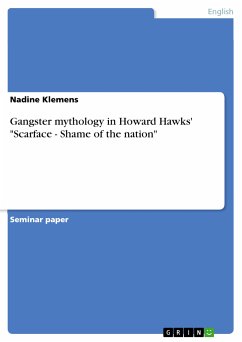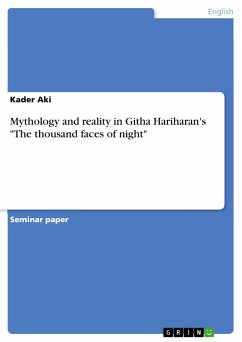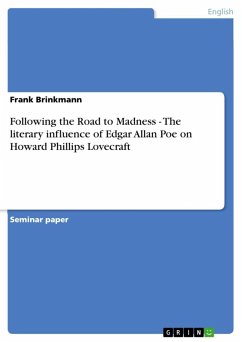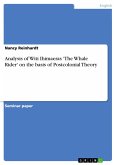Seminar paper from the year 2003 in the subject English Language and Literature Studies - Culture and Applied Geography, grade: 1,3, Technical University of Braunschweig, language: English, abstract: Worse than the economic impact of the Depression were its psychological effects on the people: unemployment and hunger lead to moral depression, distrust, and the downfall of traditional legal norms. Consequently, criminality became a major problem which politicians did not seem to be able to stop. It was an open secret that gangsters such as Al Capone made a lot of money by trading with alcoholic beverages during Prohibition and gained a lot of political influence by this. Chicago is commonly seen as the place where gangdom first developed. Its gangster image still clings to the city today. The most prominent events and people related to the gangs of Chicago were Al Capone and the 'War of Sicilian Succession' which resulted in the St Valentine's Day Massacre, leaving seven gang leaders killed and Capone as the new czar of the underworld. For the public, the adventurous and fancy life of the gang world became the symbol for the new mass culture that evolved from urbanization. The stereotype of the new criminal helped to overcome the traditional social boundaries that seemed no longer apt for the urbanized society. The gangster-movie genre, along with the press reinforced the gangster myth. SCARFACE -SHAME OF THE NATION by Howard Hawks (1930/1932) fits in with this concept. However, the movie also shows the influence the press takes in the creation of the media gangster. For this reason, it gives an ambivalent picture of the gang world in the 1930s. So is it a critique or part of the gangster myth creation? How are the historical events depicted, and how much is the representation of the gangsters in the movie predisposed by the media image of the gangster? In order to answer these questions, a short historical overview of Chicago's ganglife at the turn of the 19th century is given and the development of the gangster myth and the role of class, ethnicity, and style is explained. The characteristics of the gangster movie in the 1930s are put into context with the analysis of Howard Hawks' SCARFACE - SHAME OF THE NATION. The movie is furthermore analyzed with regard to the depiction of historical events, gangster iconography, and the role of the media.
Dieser Download kann aus rechtlichen Gründen nur mit Rechnungsadresse in A, B, BG, CY, CZ, D, DK, EW, E, FIN, F, GR, HR, H, IRL, I, LT, L, LR, M, NL, PL, P, R, S, SLO, SK ausgeliefert werden.









